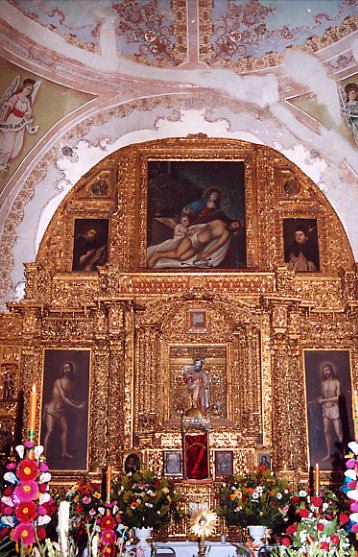
Huayapan main altarpiece
|
 Huayapan main altarpiece |
The Main Retablo
Described as "gilded lace"* the Huayapan main altarpiece is remarkable for its intricacy of its ornament, a testament to the skilled woodcarvers and other artisans who crafted this extraordinary work of baroque art. Early in the1990s the retablo was disassembled and fully restored to its former glory, and further work was done more recently by the regional chapter of Adopte una obra de arte.
Probably late 17th or early 18th century in date, the retablo is framed by opulent columns, wreathed with exquisitely carved spiralling vines in a variant of the Solomonic baroque style, then dominant in altarpiece design throughout Mexico. At the same time the ornamental lower third of the columns follows the "tritostyle" treatment traditionally associated with Oaxacan regional design. Every intervening surface is densely filled with swirling volutes and foliated relief decoration, another characteristic of Oaxacan baroque retablos, as are the spindle pendants below the main cornices.
Within this regional style, the retablo shows considerable sophistication in its forms and great confidence in its execution, suggesting the presence of a team of accomplished retablistas, who may have worked at Santo Domingo de Oaxaca or come from Puebla, a leading art center of the 17th century baroque that exerted a strong influence on its southern neighbor.
The Iconography
Although the centerpiece of the retablo is a wooden statue of the patron Saint Andrew, a striking polychrome figure notable for its powerful bearded visage, the retablo principally showcases a group of three unusual canvases depicting episodes from Christ's Passion.
These unusual, large, unsigned paintings are almost monochromatic and portray attenuated figures in a detailed and spare style influenced by northern European Mannerism. In addition there are smaller portraits of St Dominic and other church luminaries.
The main altarpiece is not the only treasure in the church. A large mural of the Last Supper decorates the sanctuary arch. Two other baroque retablos line the nave, together with several other finely crafted images including this affecting, Guatemalan style statue of the Virgin of the Rosary.
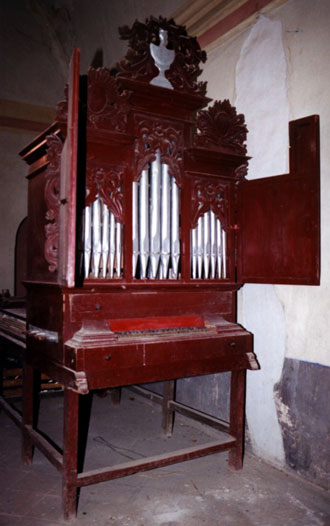 18th century pipe organ, documented by IOHO |
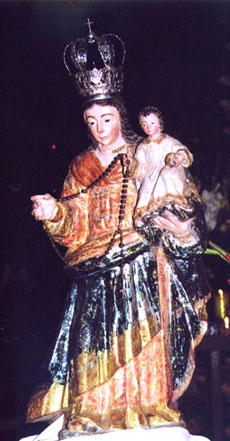 Guatemalan style statue of the Virgin of the Rosary |
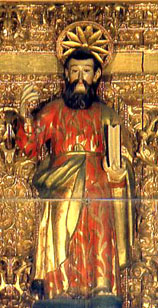 Statue of San Andrés |
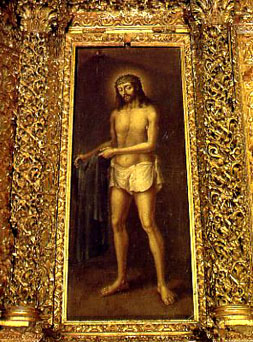 Painting: Ecce Homo |
Text & pictures ©2010 by Richard D. Perry. All rights reserved.
Reproduced with permission from www.colonial-mexico.com
| Top of page | Main index | Search | What's new |
![]() www.tomzap.com
www.tomzap.com
![]() Tom Penick:
tom@tomzap.com
Tom Penick:
tom@tomzap.com